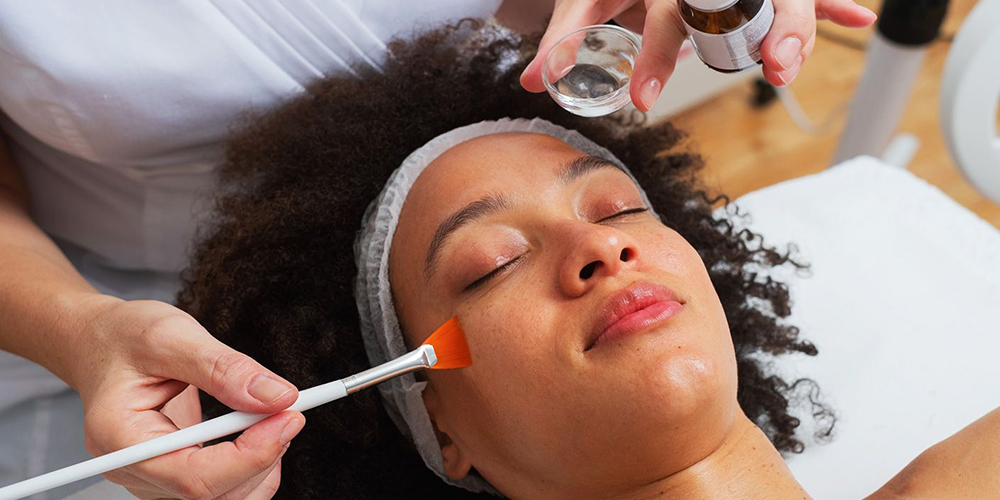- +91 97727 60561
- info@drdhabhai.in
- Wed - Sat: 5 PM - 8 PM Sunday Off

Chemical peeling is a popular cosmetic procedure used to improve the appearance of the skin by removing damaged outer layers, promoting skin regeneration, and revealing smoother, younger-looking skin beneath. This non-surgical treatment involves the application of chemical solutions to the skin, causing controlled exfoliation and stimulating the growth of new skin cells. Whether you struggle with acne scars, sun damage, fine lines, or uneven skin tone, chemical peels offer a safe and effective solution to revitalize your complexion and enhance your self-confidence. This comprehensive article will delve into the intricacies of chemical peeling, exploring its various types, benefits, potential risks, and the aftercare required to achieve optimal results.
Chemical peels come in different types, each designed to address specific skin concerns and varying penetration depth. The three main types are superficial, medium, and deep peels. Superficial peels are the mildest and focus on the epidermis, the outermost skin layer. They are suitable for treating mild discolouration, rough skin, and minor wrinkles. Medium peels penetrate the epidermis and dermis, offering more significant results for sun damage, wrinkles, and acne scars. Deep peels, on the other hand, target deeper skin layers and are effective for severe wrinkles, deep scars, and precancerous growths.
Before undergoing a chemical peel, a qualified dermatologist or licensed skincare professional will evaluate your skin and recommend the most suitable type of peel for your concerns. On the day of the procedure, your skin will be thoroughly cleansed to remove any oils or impurities. The chemical solution is then carefully applied to the treatment area, and you may experience a mild tingling or burning sensation. The duration of the procedure depends on the type and strength of the peel being used. After the desired amount of time, the chemical solution is neutralized, and a soothing ointment or dressing may be applied to aid in the healing process.
Chemical peeling offers many benefits, making it a popular choice for those seeking to improve their skin’s texture and appearance.
While chemical peeling is generally safe when performed by a trained professional, specific risks and complications are associated with the procedure. Common side effects include redness, swelling, and peeling of the skin, which are usually temporary and subside within a few days to a week. However, in some cases, patients may experience more severe reactions, such as infection, scarring, and changes in skin pigmentation. It is crucial to follow the post-treatment instructions provided by your healthcare provider to minimize the risk of complications and ensure proper healing.
Proper aftercare is essential to maximize the results of a chemical peel and maintain the health of your skin. Depending on the depth of the peel, you may be advised to avoid direct sunlight and use a broad-spectrum sunscreen regularly. Moisturizing the treated skin is vital to prevent excessive dryness and aid in healing. Avoid picking or peeling off the skin during the peeling phase, as it can lead to scarring or infection. Your skincare professional may recommend specific skincare products to enhance and prolong the benefits of the chemical peel.
Chemical peeling is a tried-and-tested cosmetic procedure that can significantly improve your skin’s texture, tone, and overall appearance. Chemical peels offer the skin a rejuvenated and youthful glow by removing damaged outer layers and promoting collagen production. Whether you choose a superficial peel for mild concerns or a deeper peel for more severe issues, the results can be transformative. However, consulting with a qualified professional, following post-treatment care instructions diligently, and being aware of potential risks before the procedure is crucial. With the right approach, chemical peeling can be a powerful tool in your journey towards healthier, more radiant skin.